ディケンズおすすめ作品7選~代表作『クリスマス・キャロル』など心温まる作品で有名な文豪をご紹介
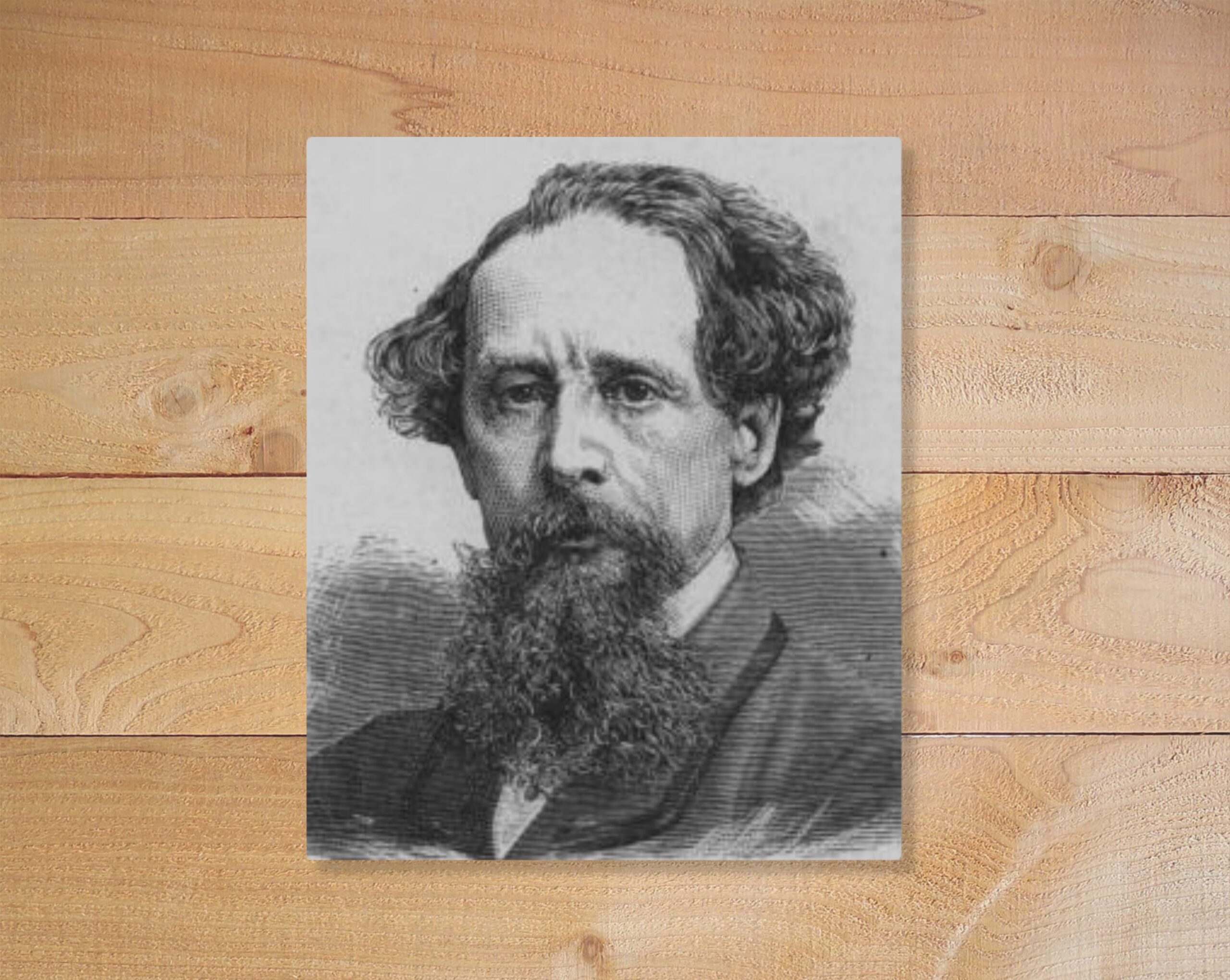
イギリスの大作家ディケンズおすすめ作品7選
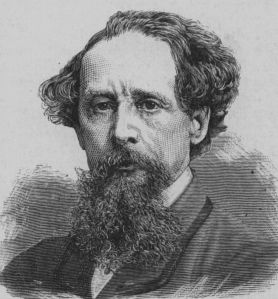
ディケンズといえば『クリスマス・キャロル』や『オリバー・ツイスト』などで有名なイギリスの文豪です。
ディケンズは1812年生まれでドストエフスキーの9歳年上に当たります。
ディケンズはもともと法律事務所の事務員から始まり、そこからジャーナリストを志し速記術を習得。法廷の速記者として経験を積んだ後、新聞記者に転職します。
そして新聞記者としての仕事の傍ら執筆した『ボズのスケッチ集』が大ヒット。そこから彼の作家人生がスタートします。
ディケンズの小説は社会に絶大な影響をもたらしました。
虐げられた子どもたちを救いたいという思いが『オリヴァー・ツイスト』をはじめ、様々な小説を通して人々に届いたのです。そしてそれが実際に社会を動かしたのです。
これはひとりの小説家として成し遂げた偉業であるように私は感じます。それだけ彼の創り出した物語が人々の心を打つものだったということだったのでしょう。
今回の記事ではそんなディケンズのおすすめ作品を紹介していきます。
『ピクウィック・クラブ』(1836年)
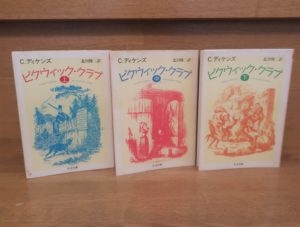
実業界を引退したゆたかな紳士ピクウィック氏は、素朴な人柄で、人間愛に満ちた人である。彼は行く先々で人を助け、悪をこらしめようと力をつくす。しかし、人がよすぎて、かえって失敗ばかり……。明るく楽しい笑いの底に人間回復の願いを託す、ディケンズ最初の長篇小説。
ちくま文庫、北川悌二訳『ピクウィック・クラブ』裏表紙
『ピクウィック・クラブ』は1836年に連載が開始されたディケンズ最初の長編小説です。
この作品はセルバンテスの『ドン・キホーテ』を意識して書かれ、ドストエフスキーの代表作『白痴』にも多大な影響を与えた作品です。
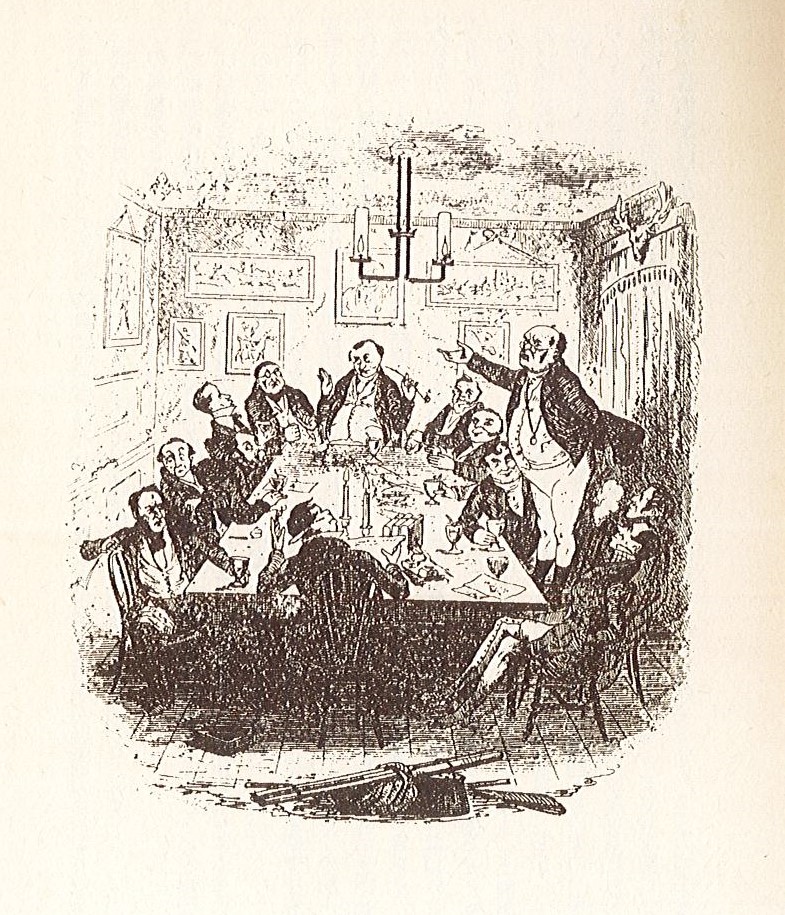
こちらの挿絵で椅子の上に立ち上がっている人物こそ、善良なるイギリスの「ドン・キホーテ」ことピクウィック氏になります。
禿げ頭に丸眼鏡、ぷっくりしたお腹周りにぴっちぴちの白ズボンという特徴的な見た目をしております。
巻末の解説に『ピクウィック・クラブ』について非常にわかりやすい概説がなされていたのでそちらを紹介します。
本小説の主人公ピクウィック氏は実業界を引退した富裕な紳土であるが、無邪気で素朴で、慈愛と人間愛の化身とでもいうべき人物である。彼はその遍歴のさきざきで悪人をこらしめ、苦境にある人を救い、虚偽をあばき、世の不正を正そうとする。しかし彼の人柄があまりにも善良で、その善意があまりにも純粋なために、悪人の奸計にかかって滑稽な失敗ばかり演じてしまう。彼のひきおこす笑いはひとえに彼のこうした義侠心と人間愛から生まれたものであり、それ故ピクウィック氏のまわりには、いつも明るく楽しい笑いの渦がひろがってゆく。
彼はサム・ウェラーという従者をつれているが、これは元気のいい生粋のロンドン子で、世間のことなら何でも実によく心得ているが、忠実に主人に仕えている。こうした従者をつれたピクウィック氏は、サンチョ・パンサをお供にして武者修行の旅に出たドン・キホーテにそっくりである。
『ドン・キホーテ』の笑いは多岐にわたり甚だ複雑であるが、その笑いの中心は、騎士道の理想にもえるドン・キホーテの高貴な理想と夢とがあまりに卑俗で散文的な現実と衝突し食い違う所から生まれている。『ピクウィック・クラブ』の場合も、全く同様にピクウィック氏のあまりに無垢な善意と高貴な人間愛が、十九世紀イギリスの卑俗な現実と矛盾し食い違うところから笑いが生まれている。
ちくま文庫、北川悌二訳『ピクウィック・クラブ』中巻P478-479
※一部改行しました
この概説にありますように、ピクウィック氏を中心にした愉快な物語がこの小説のメインストーリーとなっています。
『ピクウィック・クラブ』はとにかく面白く、ユーモアたっぷりに書かれています。この辺も『ドン・キホーテ』とそっくりです。『ドン・キホーテ』も思わずくすっとしてしまうシーンが満載でした。
当時イギリスでこれを読んでいた人たちは大笑いし、イギリス中がピクウィック氏の活躍を毎週毎週心待ちにしていたそうです。私もこの作品が大好きです。この記事ではより詳しくその内容をお話ししていますのでぜひご覧ください。
ディケンズ『ピクウィック・クラブ』あらすじ解説―ドストエフスキー『白痴』に強烈な影響!19世紀イギリス版ドン・キホーテ!
Amazon商品ページはこちら↓
『オリヴァー・ツイスト』(1837年)
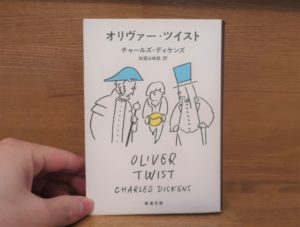
孤児オリヴァー・ツイストは薄粥のお代わりを求めたために救貧院を追い出され、ユダヤ人フェイギンを頭領とする少年たちの窃盗団に引きずり込まれた。裕福で心優しい紳士ブラウンローに保護され、その純粋な心を励まされたが、ふたたびフェイギンやその仲間のサイクスの元に戻されてしまう。どんな運命がオリヴァーを待ち受けか、そして彼の出生の秘密とは―。ディケンズ初期の代表作。
新潮文庫、加賀山卓郎訳『オリヴァー・ツイスト』裏表紙
『オリヴァー・ツイスト』はディケンズによって1837年に発表された作品です。
世の中には「悪人がいるのではなく、悪人を生み出す社会がある」。
ディケンズは世の中の悪を、個人の悪の問題であると同時に、社会の仕組みが生み出す悪としても考えます。
貧富の差が虐げられた人を生み出し、そこから抜け出したくてもどうしようもなくなった人が、生きるために罪を犯す。
悪いことをしたいから犯罪に手を染める人間などほとんどいない。悪人を悪人だからと切り捨てるのは問題の解決にならないとディケンズは考えるのです。
オリヴァー少年もまさしくそんな境遇に生まれ育ち、救貧院を追い出されそんな悪党集団の中に取り込まれてしまうことになります。
優しくて善良な子、オリヴァーははたしてどうなってしまうのか。
そしてオリヴァーの出生における秘密もこの物語の後半で明らかにされていきます。
この作品は社会現象になり、実際に貧困に苦しむ子供たちの環境改善がなされたそうです。
『オリヴァー・ツイスト』は前作の『ピクウィック・クラブ』と違って悪の世界を描いた暗い側面が強く出ている作品です。
しかし、暗いながらもそこには救いがあります。
物語をその危うさから救っているのは、オリヴァーの高潔な心と信仰であり、物語を貫いている愛と善の働きに対する確信のメッセージである。さまよえる人間オリヴァーは、危険と苦しみに会いながらも、メイリーやブラウンローに守られ、ナンシーの犠牲によって救われるというハッピーエンドを迎える。オリヴァーはフェイギンの悪の世界に引き込まれることなく、最後には善の力が勝利するのである。
彩流社 島田桂子氏『ディケンズ文学の闇と光―悪を照らし出す光に魅入られた人の物語』P68
こうした高潔な信仰や善の力が悪にも負けず、最後は勝利を迎えるという筋書きは読者に生きる勇気を与えていたことでしょう。
ディケンズの代表作『オリヴァー・ツイスト』、読みやすく物語展開も目まぐるしい面白い作品でした。とてもおすすめです。
Amazon商品ページはこちら↓
『骨董屋』(1840年)
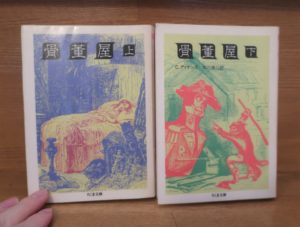
19世紀、イギリス産業革命の激動の時代を背景に、祖父に引きとられた純情無垢な少女ネルの辿る薄幸の生涯を描く大作。祖父は骨董屋を経営していたが、ネル可愛さの余り一獲千金を夢見て賭博に手を出し、破産してしまう。骨董屋は高利貸クウィルプに差し押えられ、ネルは老人とロンドンをあとに、あてどない旅に出る。美と醜、善と悪、さまざまな対立を描きながら、波瀾万丈の物語の幕が上がる。解説 小松原茂雄 (上巻)
「骨董屋」の特徴は、清楚で旺盛な、その輝かしい想像力にある。これはこの本の全能的魅力である。それは話の取扱い方と人物描写に見られるのみならず、各文章を活かしている。各言語がそれによって光っている。何といっても「骨董屋」は、ディケンズ氏のうちで一番いいものである。この本ならいくら賞めてもかまわない。すべて天才ある人達の感嘆は、この本に捧げられるだろう。[エドガー・A・ポー]解説 長谷部史親 (下巻)
ちくま文庫、北川悌二訳『骨董屋』
『骨董屋』は1840年にディケンズによって発表された作品です。
『骨董屋』は純粋無垢な少女ネルと老人の旅の物語です。
老人はそれまで堅実な生活を送っていましたが愛するネルのためにもっとお金を残してやりたいという思いから賭博にのめり込み、破産してしまいます。
そこに目を付けた高利貸しのクウィルプから逃れるために2人はあてどない旅に出ることになるのです。
この作品も『ピクウィック・クラブ』と同じく、イギリスでとてつもないセンセーションを起こすことになりました。
また、『骨董屋』の主人公たるネルは、ドストエフスキーの『虐げられた人びと』でもネリーという名前で登場します。もちろん、そっくりそのまま同じ境遇、性格ではありませんが『骨董屋』に強いインスピレーションを受けているのは否定できません。
また、この作品はキリスト教作家ディケンズという側面が強く出てきた作品でもあります。ドストエフスキーはディケンズのそのような側面も尊敬していたそうです。
ディケンズ『骨董屋』あらすじと解説―ドストエフスキー『虐げられた人びと』に強い影響!
Amazon商品ページはこちら↓
『クリスマス・キャロル』(1843年)

ケチで冷酷で人間嫌いのがりがり亡者スクルージ老人は、クリスマス・イブの夜、長い鎖に巻かれた老マーレイの亡霊と対面する。翌日からは彼の予言どおりに第一、第二、第三の幽霊に伴われて知人の家を訪問する。炉辺でクリスマスを祝う、貧しいけれど心暖かい人々や、自分の将来の姿を見せられて、さすがのスクルージも心を入れかえた……。文豪が贈る愛と感動のクリスマス・プレゼント。
新潮文庫、村岡花子訳『クリスマス・キャロル』裏表紙
『クリスマス・キャロル』はディケンズによって1843年に発表されました。
おそらくディケンズの作品で最も知名度があり、そして現代でも最も親しまれているのがこの『クリスマス・キャロル』なのではないでしょうか。
ディズニーでも映像化されたりと、小説以外の場でも親しむことが多い作品です。
小説も文庫で180ページ少々と、読みやすい分量でしかも文体も優しくストーリー展開も明快で非常に親しみやすい作品です。
さて、あらすじにもありますように、『クリスマス・キャロル』の主人公スクルージ爺さんはなかなか強烈な個性の持ち主であります。
けちで頑固で意地悪で口が悪くて、冷たくて人間嫌い。
誰からも好かれず、人を寄せ付けない典型的な人物像です。
もはや世の中に「スクルージ爺さんのような人」という言葉が定着しているほどこのお爺さんの特徴は際立っています。
『クリスマス・キャロル』ではそんなスクルージ爺さんがクリスマスイブの夜、亡くなった仕事仲間のマーレイの亡霊と対面します。
翌日からマーレイの予言通り、3人のお化けと出会い、スクルージ爺さんは自らの人生を振り返ります。そしてこのままではどんな結末を迎えるかに恐れおののきます。
そしてあのけちで頑固で冷徹なスクルージ爺さんもついに心を入れ替え、新たな人生を送るのでありました。
ディケンズの代表作『クリスマス・キャロル』のあらすじ解説―ディズニーでも映像化された作品!
Amazon商品ページはこちら↓
『デイヴィッド・コパフィールド』(1849-1850年)
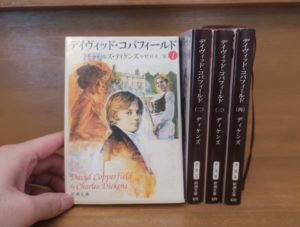
誕生まえに父を失ったデイヴィッドは、母の再婚により冷酷な継父のため苦難の日々をおくる。寄宿学校に入れられていた彼は、母の死によってロンドンの継父の商会で小僧として働かされる。自分の将来を考え、意を決して逃げだした彼は、ドーヴァに住む大伯母の家をめざし徒歩の旅をはじめる。多くの特色ある人物を精彩に富む描写で捉えた、ディケンズの自伝的要素あふれる代表作。
新潮文庫 中野好夫訳『デイヴィット・コパフィールド』裏表紙
『デイヴィッド・コパフィールド』は1849年から1850年にかけて発表されたディケンズの代表作です。
あらすじにもありますように、この作品はディケンズの自伝的な要素をはらんだ彼の代表作であり、世界の十大小説にも選ばれている名作です。ディケンズ自身もこの作品をとても気に入っていたそうです。
また、ドストエフスキーがディケンズ作品を特に高く評価していたことは当ブログでもお話ししてきましたが、改めて彼とディケンズについて語られた文を引用します。
幽囚時代のドストエフスキーがいつも読んだのは、『ピックウィック・ぺイパーズ』と『デイヴィッド・カパーフィールド』だけだった。それに一八五七年の手紙にたまたま書かれたある一句は、ディケンズがこの時期の彼に親しまれていたことを証している。ドストエフスキーがシべリアから帰って書いた最初の長篇『虐げれた人々』の中のネリーは『骨董店』(ディケンズの小説、一八四一年)の頁からじかに借りたものだ、ということは批評家たちもつねに認めてきた。
筑摩書房 E・H・カー 松村達雄訳『ドストエフスキー』P79
ドストエフスキーのシベリア幽囚時代、彼が好んで読んでいたのが今回ご紹介している『デイヴィッド・コパフィールド』だったのです。
この記事ではそんなドストエフスキーと『デイヴィッド・コパフィールド』についてよりくわしくお話ししていきます。
ディケンズ『デイヴィッド・コパフィールド』あらすじ解説―ドストエフスキーとの関係
Amazon商品ページはこちら↓
『二都物語』(1859年)
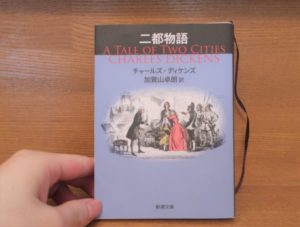
フランスの暴政を嫌って渡英した亡命貴族のチャールズ・ダーネイ、人生に絶望した放蕩無頼の弁護士シドニー・カートン。二人の青年はともに、無実の罪で長年バスティーユに投獄されていたマネット医師の娘ルーシーに思いを寄せる。折りしも、パリでは革命の炎が燃え上がろうとしていた。時代の荒波に翻弄される三人の運命やいかに?壮大な歴史ロマン、永遠の名作を新訳で贈る。
新潮文庫 加賀山卓郎訳『二都物語』裏表紙
1859年に発表されたこの作品はディケンズ作品の中でも屈指の人気を誇る名作です。
訳者の加賀山卓郎氏もあとがきで次のように述べています。
イギリスの国民作家であるだけでなく、世界じゅうでいまも広く読まれ、ドストエフスキーやプルースト、カフカといった諸外国の大作家にも影響を与えたディケンズが、後期の作品群では、彼の大きな特徴であるユーモアが抑え気味になり、社会悪や制度を批判する重いテーマや、陰鬱な登場人物が増えてくる。『二都物語』は、そうした〝ダーク〟ディケンズ全開の一篇で、二十を超える作品のなかでも傑出したエンターテインメントだ。二作しかない歴史物のひとつだが、『クリスマス・キャロル』とともにもっともよく知られ、小説として世界歴代トップクラスのべストセラーでもある。
新潮文庫 加賀山卓郎訳『二都物語』P660
加賀山氏が言うように、この作品はこれまでの作品に比べると明らかにユーモアが抑えられています。それよりもフランス革命下にはびこる悪の描写やロンドンの陰鬱な世界などが鮮明に描かれています。
では、そんな暗い雰囲気の小説ならつまらないのでは?
いえいえ、そんな心配はご無用です。加賀山氏はこう言います。
本書は彼の長篇にしては短めで、週刊掲載だったこともあって話の展開が速く、デイケンズの小説は長いからと敬遠していたかたにこそお薦めしたい。法廷劇、殺人、復讐、暴動、スパイの暗躍、秘められた過去など、ミステリーファンを愉しませる趣向にも富んでいる。ディケンズと聞いてまず頭に浮かぶのは、数々の魅力的な登場人物である。とくに市井の人々を生き生きと自在に描き出す巧さは、百五十年以上を経たいまでも他の追随を許さない(さらにそれを子供の視点で書かせれば無敵である)。しかし、本書については、作者自身があらかじめ〝事件からなる物語〟を書くという方針を定め、事件に沿って人物を動かす手法をとったようだ。
とはいえ、そこはもちろんディケンズのこと、フランス革命という歴史的な動乱を取り上げながらも、それはあくまで背景であって、物語の中心となるのはやはりロンドンとパリという二都に住み、二都を往き来する人々の、人間ドラマである。そこがしっかりと書かれているからこそ、愛する人のために身を捧げる、あのいささか現実離れした行動にも説得力があり、読者の感情を揺さぶるのだ。
新潮文庫 加賀山卓郎訳『二都物語』P662-663
加賀山氏の言うように、この作品は展開が早く、またそれぞれの登場人物もキャラが際立っていて読みやすいです。また、ミステリーファンにも満足してもらえるほどのストーリー展開になっています。
ディケンズ屈指の人気作!『二都物語』あらすじ解説―フランス革命期のロンドンとパリを描く!
Amazon商品ページはこちら↓
『大いなる遺産』(1860-1861年)
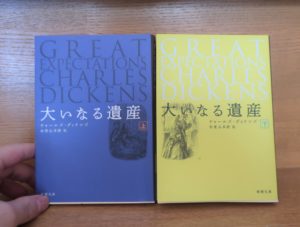
優しい鍛冶屋の義兄ジョーに育てられている少年ピップは、あるクリスマス・イヴの晩、脱獄囚の男と出会う。脅されて足枷を切るヤスリを家から盗んで与えた記憶は彼の脳裏に強く残った―。長じたある日、ロンドンからやってきた弁護士から、さる人物の莫大な遺産を相続することを示唆されると、貧しいながらも人間味ある生活を捨て去り、ピップは大都市ロンドンへと旅立つのだった……。(上巻)
ロンドンへ到着し、遺産に相応しい紳士となるべく、贅沢な生活を送るピップ。花嫁衣裳を着て隠遁生活を送る老婦人ハヴィシャム、その養女でピップを魅了するエステラ、再び姿を現した元脱獄囚マグウィッチなど、ピップは周囲の人々の思惑に翻弄される。その危うい運命はどこへ通じているのか。痛烈なユーモアと深い情感で、人問世界の悲喜交々を描いた、イギリス最大の文豪の代表的傑作長編。(下巻)
新潮文庫 加賀山卓郎訳『大いなる遺産』
『大いなる遺産』はディケンズによって1860年から61年にかけて連載されました。
この物語は少年ピップの成長物語です。貧しいながらも人間味ある生活をしていたピップはふとしたことからお金持ちの令嬢エステラに恋をします。
エステラへの恋は贅沢な暮らしへの憧れへとつながり、やがてピップに貧しい生活を捨てさせることになります。
しかし謎の遺産を相続することになりお金持ちになったピップは次々と謎の出来事に巻き込まれ、彼の「大いなる遺産」はますます謎めいたものとなっていきます。
「大いなる遺産」とは一体何なのか。誰からの遺産なのか。そしてピップはどうなってしまうのか。最後の最後まで息をつかせぬストーリ―で私たちを楽しませてくれます。
ネタバレになるのでここには書きませんが「大いなる遺産」の正体はかなり意外なもので、ディケンズにしてやられたな感が満載でした。
これまでのディケンズとは一味違ったひねりを加えてきます。
上下2巻構成で、手に取った時はちょっと長いかなと思ったりしましたが読み始めてしまえばあっという間でした。さすがディケンズです。
晩年の傑作『大いなる遺産』、こちらもとてもおすすめです。
Amazon商品ページはこちら↓
番外編⑴ ディケンズなくしてドストエフスキーなし!イギリスの文豪ディケンズとドストエフスキー
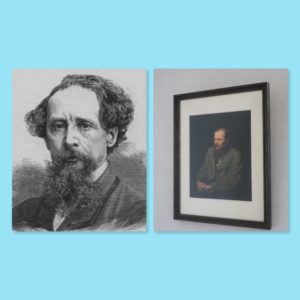
ロシアの文豪ドストエフスキーはディケンズをキリスト教作家として尊敬していました。
ディケンズの愛に満ちた作品を愛し、その優しい世界観を感じていたのです。
また、ドストエフスキーは晩年、虐げられた子どもたちや女性に対して強い関心を表明するようになっていました。
特に1876年からの『作家の日記』ではその傾向が顕著となっています。
私が『ドストエフスキー全集』を初めて読んだ時、彼の優しさに気付いたのはこの『作家の日記』がきっかけでした。
このドストエフスキーの優しいまなざしは、ディケンズの影響も強くあったのかもしれません。
悪のはびこる世界でも、優しい愛ある人間性を感じることができるのがディケンズの作品です。
この記事ではそんなディケンズとドストエフスキーの関係と、ディケンズ文学の特徴についてお話ししていきます。きっとこれまでのディケンズ像とは違った側面を知ることになると思います。ぜひご覧ください。
ディケンズなくしてドストエフスキーなし!イギリスの文豪ディケンズとドストエフスキー
番外編⑵ 島田桂子『ディケンズ文学の闇と光』
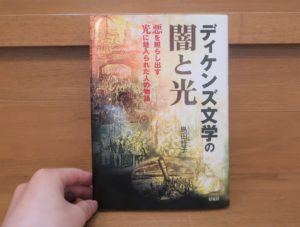
これは名著中の名著です。本当に素晴らしいです。
読んでいて驚いてしまいました。
ディケンズといえばイギリスの文豪。ロシアで言うならドストエフスキーやトルストイのような存在です。
そのような作家の解説書となると読みにくかったり難しくなってしまいがちですが、この本は一味違います。
わかりやすく、かつ非常に深いところまで解説してくれるのです。
言葉も平易ですし文章も読みやすい。
しかもテーマに沿って作品ひとつひとつを解説してくれるのでその作品を理解するのに非常に役に立ちます。これほどわかりやすく、かつ深い考察までされている本はなかなかお目にかかれるものではありません。
この作品ではディケンズの宗教的な思想や遍歴、そして作品から見る聖書的な世界観を解説していきます。
ディケンズの作品はキリスト教的な世界観が非常に多く描かれています。
ディケンズの作品創造の源泉がキリスト教的世界観にあるのです。
とはいえ、ディケンズは信仰ガチガチの人間ではありません。あくまで物語の世界観の形成にキリスト教の思想が重要な影響を与えたということです。
彼の全てが全てキリスト教だということではありません。キリスト教にも色々あります。人それぞれキリスト教徒としての様々な姿があるのです。(これはドストエフスキーも同じです)
日本でも同じですね。仏教徒と一言で言っても宗派もたくさんあれば、たとえ同じ宗派であろうともひとりひとりその心や生活はまったく違います。
この本ではディケンズとその作品ひとつひとつを丁寧に追っていきます。
作品から読み取れるキリスト教的な世界観を島田氏が懇切丁寧に解説してくれますので非常にわかりやすいです。
教義的なものや哲学的な知識というよりも「ディケンズが世界をどう見ているか」、「善悪をどう考えているか」、「社会をどうしたら良くできるのだろうか」という視点から述べているので、キリスト教にあまり関心がない方でも理解できるように書かれています。
難しい言葉を使わずにディケンズ作品の核心を突いていくその語り口はもう見事としか言いようがありません。
ディケンズ好きな人にぜひおすすめしたい1冊です。また、これからディケンズを読んでみたいという方にも大きな助けになる本です。非常におすすめです。
島田桂子『ディケンズ文学の闇と光』ディケンズとドストエフスキー・キリスト教を知るならこの1冊!
Amazon商品ページはこちら↓
ディケンズ文学の闇と光: 〈悪〉を照らし出す〈光〉に魅入られた人の物語
番外編⑶『写真で見る ヴィクトリア朝ロンドンの都市と生活』
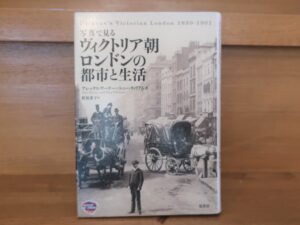
この本では19世紀中頃から後半にかけてのロンドンの姿を大量の写真で見ることができます。
そしてこの本の特徴は19世紀イギリスの偉大な文豪ディケンズと絡めてロンドンの街が語られる点にあります。
ヴィクトリア朝は産業革命が進み、イギリスが最も繁栄した時代です。圧倒的な繁栄とそれに伴って生まれた格差。この光と闇が同時に生まれたのがヴィクトリア朝時代です。ディケンズはまさしくそのような大変化の時代を生きたのでありました。
この本ではそれぞれのディケンズ作品との関わりも解説されていきます。ですのでディケンズファンにはたまらない構成となっています。
また、そもそも私がヴィクトリア朝のロンドンを学ぼうと思ったのはマルクスが滞在していた当時のロンドンを知るためでした。
実はマルクスはディケンズの作品がお気に入りで、彼の作品から強い影響を受けていたとされています。貧困に苦しむ人々の姿を描いたディケンズに対し、マルクスも思う所があったのでしょう。
この本はそんなディケンズやマルクスも見たであろうロンドンの姿を知れる素晴らしい1冊です。当時の人びとの生活や文化の解説もわかりやすく、とても読みやすい作品となっています。おすすめです!
『写真で見る ヴィクトリア朝ロンドンの都市と生活』ディケンズも見た19世紀後半のロンドンを知るのにおすすめ!
Amazon商品ページはこちら↓
おわりに
ディケンズの小説を読めば当時のイギリスの社会状況や、イギリス人のメンタリティーを知ることができます。
1800年代半ばのイギリスといえば、産業革命も進み、イギリスの国力は世界を席巻するものでした。ですがその反面労働環境は悲惨を極め、経済格差は広がり、環境公害も起こっていました。
そんな社会の闇をディケンズは冷静な目で描きます。ですがそんな闇を描きつつも彼は持ち前のユーモアや善良なる救い手の力によって物語に光を差し込ませます。
この絶妙なバランス感こそディケンズ小説の面白さの秘訣なのではないかと思います。
現在でも全く古さを感じさせない面白さがディケンズにはあります。ぜひおすすめしたい作家です。
以上、「イギリスの大作家ディケンズおすすめ作品7選~『クリスマス・キャロル』など心温まる作品で有名な文豪」でした。
関連記事
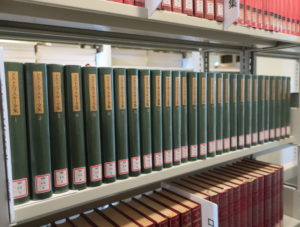
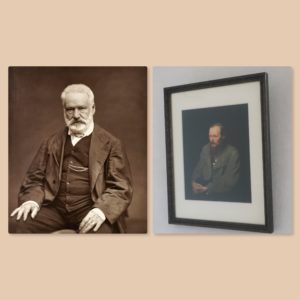
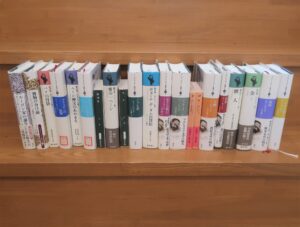
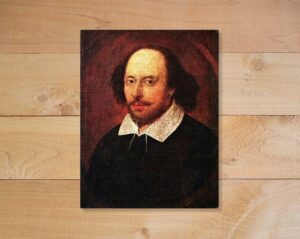
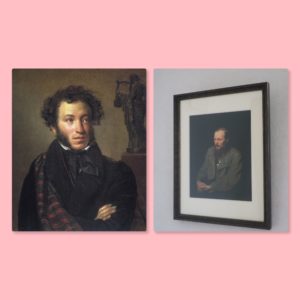
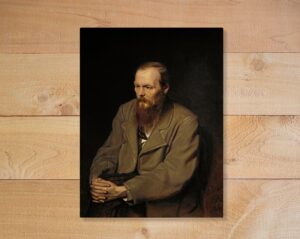
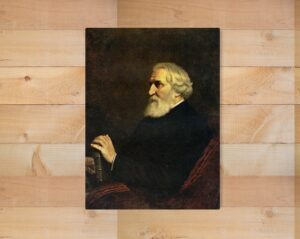
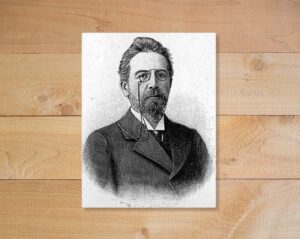









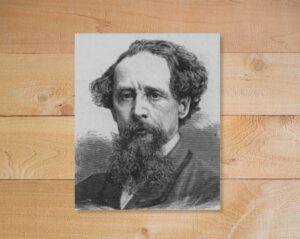
コメント